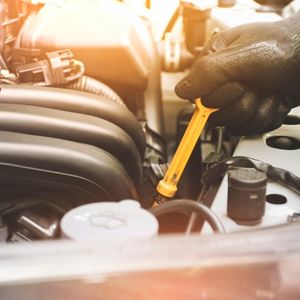Proper car maintenance is key to ensuring your vehicle’s longevity and optimal performance. One fundamental aspect of this maintenance routine is check oil of car regularly. The engine oil plays a crucial role in lubricating the engine’s moving parts, reducing friction, and dissipating heat. In this comprehensive guide, we’ll walk you through the step-by-step process of checking the oil in your car, offering valuable tips and insights along the way.
Why Regular Oil Checks Matter: Ensuring Longevity and Performance

Before delving into the how-to, it’s essential to understand why checking your car’s oil regularly is so important. Engine oil lubricates the various components of the engine, preventing wear and tear and ensuring smooth operation. Regular oil checks help you maintain the optimal oil level, ensuring that your engine is well-lubricated and runs efficiently. This, in turn, contributes to the overall longevity and performance of your vehicle.
Step-by-Step Guide: How to Check Oil in Your Car
Step 1: Park on a Level Surface
Start by parking your car on a level surface. This ensures an accurate oil level reading when you check it. If your vehicle is on an incline, the oil may pool to one side of the oil pan, providing a misleading measurement.
Step 2: Turn Off the Engine and Let It Cool
Before checking the oil, ensure that the engine is turned off and has had sufficient time to cool down. Hot oil can give inaccurate readings and may pose a burn risk.
Step 3: Locate the Dipstick
Pop the hood and locate the dipstick, which is usually brightly colored and has a loop or T-shape handle. If you’re unsure, refer to your vehicle’s owner’s manual for guidance on identifying the dipstick.
Step 4: Remove and Wipe the Dipstick
Pull out the dipstick, wipe it clean with a cloth or paper towel, and reinsert it fully. This ensures that you get an accurate reading of the current oil level.
Step 5: Withdraw the Dipstick and Check the Oil Level
Once you’ve reinserted the dipstick, pull it out again and observe the oil level. There are usually markings or indicators on the dipstick that show the proper oil level range. If the oil is below the recommended level, it’s time to add more.
Tips for a Successful Oil Check: Dos and Don’ts

Do:
- Check the Oil Regularly: Aim to check your car’s oil at least once a month, or more frequently if you notice any changes in your vehicle’s performance.
- Use the Right Oil: Consult your owner’s manual to determine the recommended oil type for your car. Using the right oil is crucial for optimal engine performance.
- Add Oil Gradually: If you need to add oil, do so gradually. Pour a little at a time and recheck the level to avoid overfilling.
Don’t:
- Overlook Oil Changes: Regular oil changes are as important as checking the oil level. Follow your manufacturer’s recommendations for oil change intervals.
- Ignore Warning Signs: Unusual engine noises, decreased fuel efficiency, or the oil pressure warning light illuminated on your dashboard are signs that require immediate attention.
- Neglect Other Fluids: While checking the oil is crucial, don’t forget about other vital fluids like transmission fluid, brake fluid, and coolant. Regularly inspect and top up these fluids as needed.
Common Pitfalls to Avoid: Mistakes That Can Impact Your Engine

Pitfall 1: Checking the Oil When the Engine is Hot
Checking the oil immediately after driving can result in inaccurate readings. Hot oil expands, giving a false impression of a higher oil level. Always let your engine cool down before checking the oil.
Pitfall 2: Ignoring Oil Leaks
If you notice oil spots under your parked car, it’s a sign of a potential leak. Ignoring leaks can lead to low oil levels and, consequently, engine damage. Address any leaks promptly and consult with a mechanic if needed.
Pitfall 3: Neglecting the Oil Quality
While checking the oil level is crucial, don’t overlook the oil’s quality. If the oil appears dark and dirty, it’s time for an oil change. Fresh, clean oil is essential for proper lubrication and engine health.
Conclusion
In conclusion, checking the oil in your car is a fundamental aspect of responsible vehicle ownership. Regular oil checks empower you to take control of your car’s health, ensuring that the engine runs smoothly and efficiently. By following our step-by-step guide, adhering to essential tips, and avoiding common pitfalls, you contribute to the longevity and optimal performance of your vehicle. Make oil checks a routine part of your car maintenance, and you’ll reap the benefits of a well-cared-for engine for years to come.

